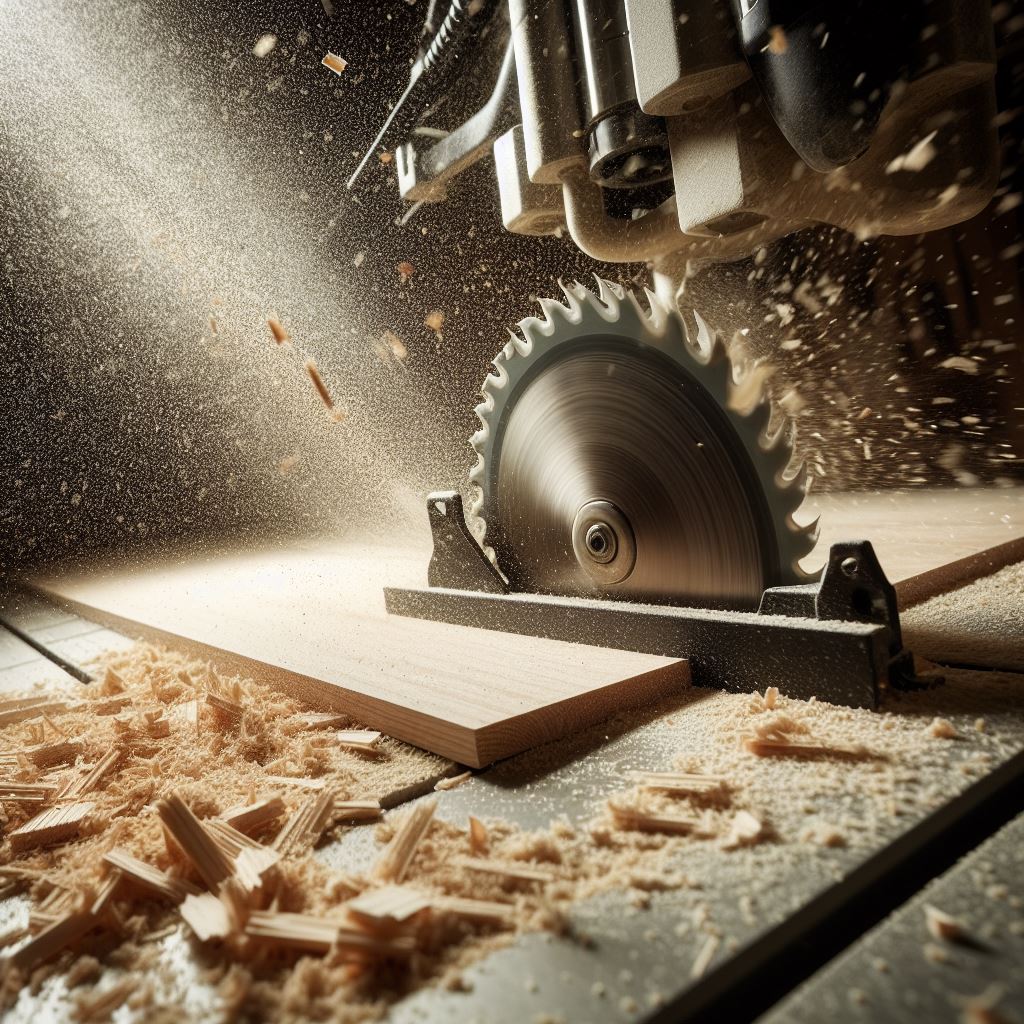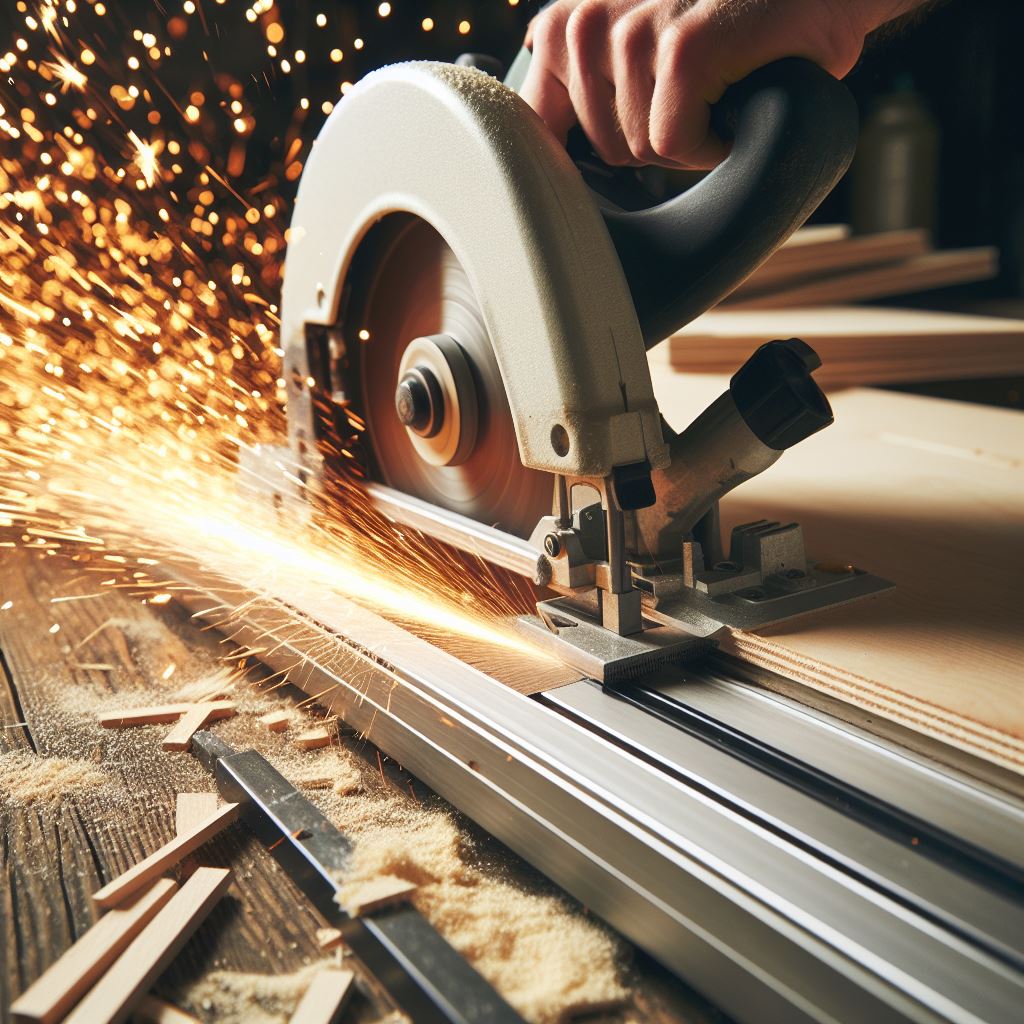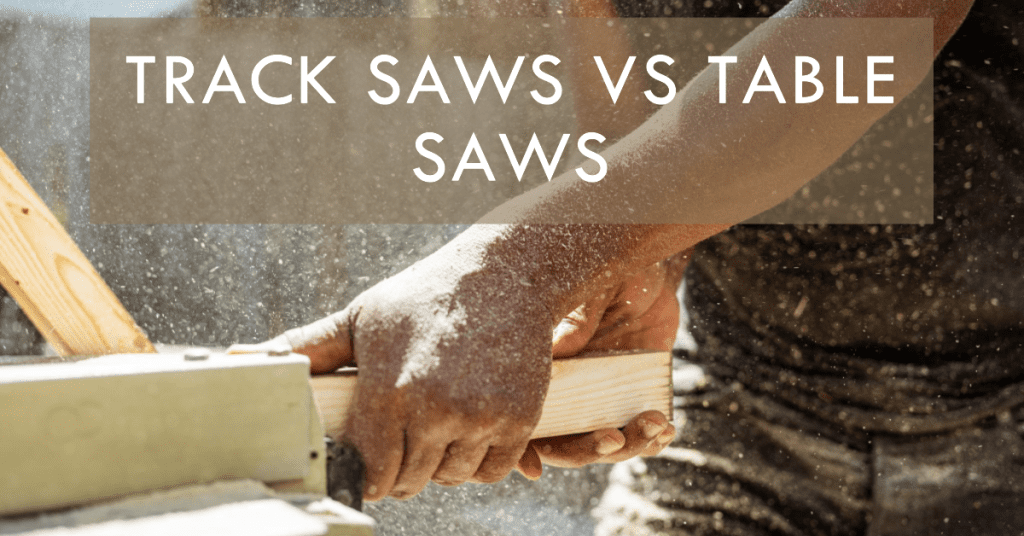Ask any woodworker about essential power tools for efficient cutting and joinery, and table saws always make the list. Benchtop table saws provide exceptional accuracy and depth for ripping lumber, cross-cutting to precise lengths, angled miter work, rabbets, dado grooves, and more workshop tasks.
But the emerging track saw power tool category competes as a portable, safe rip-cutting alternative. Track saws utilize a guided track rail to deliver exceptional straight-line ripping capacity beyond small benchtop tables. cordless track saws even allow accurate site work.
So should woodworkers choose the stationary stability of table saws, or the mobile versatility of track saw systems? Here is an in-depth comparison highlighting the pros and cons of each cutting platform to help decide which saw reinvents woodshop productivity…or whether owning both table and track saws proves the ultimate combination.
Primary Purpose & Cut Capabilities
While track saws now handle some tasks previously exclusive to cabinet table saws, understanding the specialty purpose and ideal cutting strengths of each saw prevents unrealistic expectations.
Table Saws Excel At:

- Precise cross cuts under 12 inches
- Various angled miters and bevels
- Small workpiece freehand cuts
- Cutting grooves, tenons and narrow slots
- Quick depth adjustments
Track Saws Handle Well:

- Long rip cuts up to 62” on wide stock
- Breaking down plywood and sheet goods
- Site work portability with cordless track saws
- Straight cuts in awkward workspaces
- Thin stock under 3⁄4 inch thickness
Track mounts limit certain specialty cuts like dados or cross-grain miters better suited to the open table. But supplementing a table saw with track saw rip capacity boosts overall versatility missing from one saw alone.
Cut Accuracy & Precision
Delivering exacting precision separates serious power saws from frustrating equipment. Hobbyists demand the same expert results as pros.
Table Saws Stay Square With:
- Alignable rip fences calibrate precisely
- Miter slots maintain perpendicular angles
- Smaller blades enhance control
- Easy measurement markings
- Stable work surface and minimal vibration
Guided Tracks Make Track Saws Precisely:
- Automatically straight and smooth
- Parallel to the cutting edge
- Vibration-free with two points of contact
- Marked tracks for repeat cuts
- Portable to take precision on-site
Assuming proper adjustment and blade upkeep, both saw types make exceptionally clean cuts. Track mounts are inherently straight thanks to the rigid rail. Bevel abilities up to 48° depend on the saw model itself. But for angled expertise, table saws maintain the edge.
Safety & Dust Management
Working around any exposed, spinning saw blade poses innate hazards, especially table saw kickback. And airborne dust harms long-term shop health.
Table Saws Require Caution With:
- Kickback danger pulling lumber
- Exposed blades anddnnlaw shoots
- Built-up dust under the cabinet
- Loud, consistent noise
Track Saws Improve Safety Through:
- Enclosed blades covering the edge
- Saw stabilizes on both sides
- Above table operation
- Portability moves dust away
- Quieter operation without constant motor noise
Quality guarding and kickback prevention make modern table saws increasingly safe for aware users. But track saws win for keeping hands completely away from hidden blades behind durable casings. And portable dust collection keeps air cleaner.
Cut Depth & Width Capacities
The cutting dimensions possibly determine which saw suits your workpiece needs. Expansion potential saves upgrading costs down the road.
Table Saws Rip & Cross Cut:
- 3-5 inch depth at 90°
- 14-inch width on compact saws
- Up to 30 inches for professional cabinet saws
Track Saws Rip Wider And Deeper:
- 1-2 inch depth at 90°
- Over 62 inches on broad tracks
- 8 inch saws allow 63 inches crosscutting
Compact job site table saws travel better but sacrifice capacity Versus industrial cabinet units. Track saw kit lengths can vary widely for unlimited rip sizing. Smaller saws still cross cut adequately with the right circular saw model. Large table widths remain the depth kings.
Power, Speed, & Control
Balancing serious cutting power with finessed handling separates hobby rips from pro-level performance. Power demands depend on your material difficulty and project pace requirements.
Table Saws Tout Controlled Power With:
- 15 amp motors on 120V circuits
- 4000+ RPM general speed
- Alignment gauges and tight miters
- Smaller blades enhance manipulation
High Torque Track Saws Boast:
- 1800-5800 RPM variable speed
- Plunge feature for interior cuts
- Longer blade equals faster rips
- Clamping stabilizes heavy stock
Assuming proper technique, both saws provide incredible power-to-weight ratios for fast, smooth cuts. Track saws plunge cleanly through layer glued panels. Table saws offer finessed handling of smaller stock. It’s easier adding a table to track saw kits than mobilizing cabinet saws.
Price Considerations
With advanced functionality comes added cost. But investment should match necessary capability and longevity to avoid overspending
Table Saw Pricing:
- Benchtop $200-$800
- Contractor $800-$1500
- Cabinet $1500+
- Added accessories are common
Track Saw Investment Includes:
- Basic rails $400+
- Plunge saw kit $400-$1200
- Limiting rail upgrades
- Fewer accessories needed
Considering many hobbyists already own a circular saw adding rail guides costs less than buying cabinet saws. But entry-level benchtop tables compete favorably to initiate basic projects. Combining table and track saws balances budgets best for advanced cuts.
Key Differences At A Glance
| Comparison Aspect | Table Saw | Track Saw |
|---|---|---|
| Purpose | Cross cuts, joinery, precision work | Rip cuts, breaking down sheet goods |
| Accuracy | Aligned fences and miter slots | Locked parallel track guides |
| Safety | Standard but kickback risks | Blade covered behind guard |
| Dust Collection | Below the surface with extra DC port | Above board with portable DC |
| Max Cut Depth | Up to 5 inches | Around 2 inches for most models |
| Max Cut Width | 30 inches on cabinet saws | 62+ inches with add-on tracks |
| Power | 4000+ RPM with 15 amp motor | 1800-5800 RPM variable speed |
| Learning Curve | High lifetime practice | Moderate with clamping tricks |
| Cost | $200-$1500+ | $400-$1200 depends on tracks |
Which Saw Is Right For Your Woodworking?
For hobbyists starting out on a budget, a benchtop table saw makes an ideal primary fixed cutting station in small home workshops. Mobility matters less when first learning technique. And compact table saws handle both rip and cross cuts for smaller crafts efficiently at low costs.
Intermediate woodworkers working larger stock benefit upgrading to a professional cabinet table saw with 30+ inches of rip capacity and 3-5 inch cut depth. Built-in uplift mobile bases make moving bulky saws simple across project needs.
For woodworking professionals focused on site portability finishing down wide panel stock, a quality track saw kit proves the perfect supplement to maximize on-location ripping freedom. The track edge guide beats any circular saw. Combine with a durable benchtop saw at the main woodshop for the ultimate one-two punch covering both job sites and custom cabinetry finishing.
While the ideal woodshop ultimately owns both a heavy-duty table saw for finessed cutting and a track saw kit for advanced ripping, choosing which saw suits your current experience level and project goals makes the most practical financial sense when starting out. So consider your power demands, budget flexibility, cut dimension needs, mobility requirements, and workshop real estate before deciding between table saws and track saws.
Recommended Top Saw Models
No matter, if you pick table saws or track saw kits as your ideal cutting platform, choosing reliable precision models from reputable brands, ensures smooth performance all project long. Here are my top power saw recommendations across popular budget ranges for both track and table saw categories:
Quality Table Saws
- DEWALT DW745 Job Site Table Saw – Best Benchtop Pick Under $500
- Delta 36-6023 10-inch Contractor Saw – Powerful Mid-Size With Mobility
- SawStop Professional Cabinet Saw – Safety-Focused Cabinet Workhorse
Robust Track Saw Kits
- Festool 55” Track Saw Guide Rail – Premium Accuracy
- DEWALT DWS5021 Plunge Cut Track Saw – Cordless Convenience
- Makita SP6000J1 6-1/2” Plunge Cut Circular Saw – Smooth Controlled Cuts
- Grizzly T10687 Track Saw Guide – Budget DIY alternative
Hopefully detailing key pros, cons, differences, and capabilities helps clarify choosing the best cutting platform to meet your woodworking needs and skills between track saw vs table saw categories. And recommended models provide quality options to start your purchase research for upgraded workshop productivity.
Now just decide where portable guided ripping freedom or finessed table precision holds more value for your projects this year!

